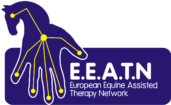European Equine Assisted Therapy Network (EEATN)
Inspiration for learning and sharing through open-minded collaboration
EEFTN to EEATN
During the 3rd meeting held in Stockholm, an extensive conversation took place, emphasizing the significance of establishing a shared terminology for Equine Facilitated Services, now referred to as Equine Assisted Services (EAS). The consensus was to align our terminology with that of HETI, and as a result, the network's name was updated to the European Equine Assisted Therapy Network.
Terminology and definitions
of terms
The following definitions of EAS fields have been unanimously accepted by all attendees at the 3rd EEATN meeting in Stockholm in September 2023. It is advised that EEATN members incorporate these terms and definitions into their work, studies, webpages, and other endeavours. The primary objective is to foster a globally recognized terminology and facilitate its widespread adoption among various providers and participants.
Animal Assisted Services (AAS): A goal-oriented and structured service that intentionally includes or incorporates animals in health, education and human services for the purpose of physical, mental and social gains in humans. It involves people with knowledge of the people and animals involved. Animal-assisted services incorporate human-animal teams in formal human services.
Equine Assisted Services (EAS): An umbrella term utilised internationally in day-to-day communication of all services applying equine to benefit people with special needs.
- Equine Assisted Therapy (EAT): it can be conducted by different qualified healthcare professionals (for example, physiotherapists, occupational therapists, psychologists, and speech and language therapists), including trained equines in the therapy program in order to benefit the participants. The therapy is focused on evidence-based, multimodal, and holistic practice. Further education in EAT must be completed before applying this form of therapy. It is divided into fields:
- Equine Assisted Physiotherapy (EAPT) is carried out by a specialised physiotherapist using equine conformation, movement, and activities to improve the participant's motor function, participation and quality of life.
- Equine Assisted Occupational Therapy (EAOT) is carried out by a specialised occupational therapist using targeted, meaningful, mounted, and unmounted activities and the equine environment to maximise the participant's ability to engage in everyday life and enhance the quality of life.
- Equine Assisted Psychological Therapy (EAPsT) is carried out by a mental health therapist (including educational, clinical, counselling, social psychology, psychiatry or psychotherapy) to achieve cognitive, emotional, social and/or behavioural goals, incorporating equines mounted and/or groundwork.
- Equine Assisted Speech and Language Therapy (EASLT) is carried out by a qualified speech and language therapist using equine movement and/or the environment to promote functional outcomes in communication and speech.
- Equine Assisted Psychomotor Therapy (EAPmT) is carried out by a qualified psychomotoricist using the equine movement and educational activities in order to develop psychomotor, cognitive, social and emotional skills.
